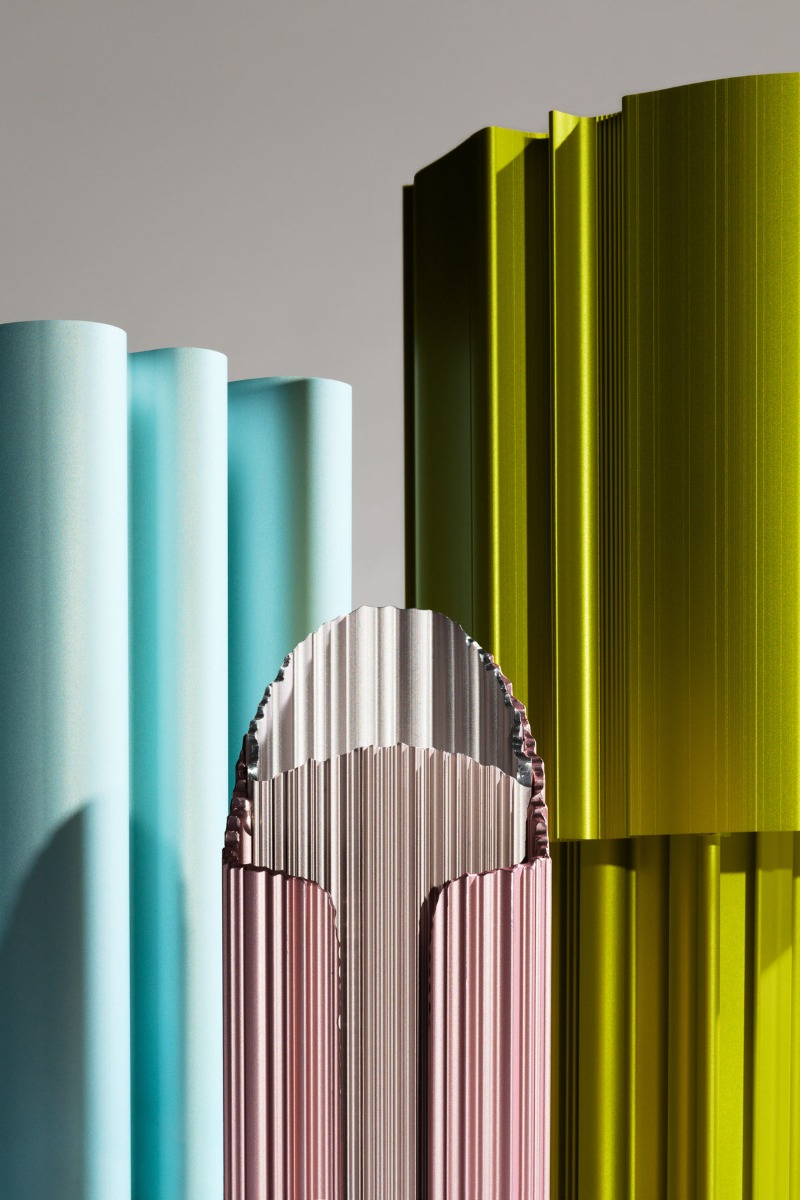Circular materials from Milan
Recycling, Reuse and Circular Materials

The Catifa Carta from Arper made of PaperShell demonstrates the circular economy in design. It consists of 29 layers of paper laminated with natural resin. © Salva Lopez
Arper put an unfinished chair in the spotlight at the Salone del Mobile: a seat shell was enthroned on a pedestal, surrounded by strips of a brown material with a paper-like texture. The name of the new model, Catifa Carta, reinforced this impression. For the first time, the company presented its classic Catifa with a seat shell made of 29 layers of pressed paper.


Catifa Carta is available in two colours and with three different frames. © Alberto Sinigaglia
The PaperShell material is produced in Sweden from by-products of the wood industry and solidified with natural resin as a binding agent. The shell is available in brown and black, the latter of which is produced by the application of heat. Arper is currently working on a take-back system for the furniture at the end of its life cycle. To ensure that the CO2 bound in the material is not released again, the company plans to one day convert the shell into biochar through pyrolysis, which can then be used to improve the soil.


The Alder table collection by Patricia Urquiola for Mater is made from a biodegradable mixture called Matek, a patented material made from recycled waste such as coffee beans and sawdust. © Mater
Organic material suitable for outdoor use
The Alder table collection by Patricia Urquiola for Mater made of biodegradable Matek was also on show for the first time in Milan. The side table is made from a mixture of biodegradable plastic and either coffee husk or wood waste – all natural materials that can eventually decompose in nature. The Alder Side Table can be used both indoors and outdoors.
3D wood furniture
In collaboration with designer Harry Thaler, the German company Additive Tectonics developed the material Econit Wood, which consists of finely ground sawdust and a biological binder for 3D printing. The resulting Printed Nature collection was presented at the Alcova design platform in Milan. A backdrop of wood powder surrounds the furniture elements, which emphasises the furniture's creation process and is reminiscent of desert dunes. The surface of Econit Wood is slightly rough and irregular, ideal for interiors with sound-absorbing properties and biodegradability.


Designer Harry Thaler has trialled a new wood-based material and used it to produce furniture using 3D printing. © Samuel Rosport
Recycled, low carbon aluminium
Aluminium is a controversial material: it is widely used in everything from foils to electric cars and is easy to recycle. However, its extraction is harmful to the environment and its production is energy-intensive. Against this backdrop, the question arises as to whether recycled aluminium could be the solution. The Norwegian aluminium producer and energy company Hydro has set itself precisely this goal and presented the Hydro Circal 100R product as part of the 100R exhibition. According to the manufacturer, this is the world's first aluminium made entirely from post-consumer waste.


Hydro Circal 100R is an aluminium product made from end-user waste. © Einar Aslaksen


The specification for the designs was that they should be made entirely of the metal and manufactured using the extrusion process © Einar Aslaksen
Circular ways of thinking
Companies and designers are looking for a variety of solutions, from recycled and durable materials to extending product lifespans. But how do we design our buildings? The book Architecture and Climate Change offers insights from 20 architects and urbanists on the future of construction. Their interviews show pioneering projects and combine them with personal visions and political ideals to create a multi-layered kaleidoscope.
Click here to visit the shop.
Manufacturer: Arper, Mater, Additive Tectonics, Hydro
Products: Arper: CatifaCarta; Mater: Alder Kollektion; Additive Tectonics: EconitWood; Hydro: Hydro Circal 100R
Category: Interiors
Architecture and Climate Change. 20 Interviews on the Future of Building.
Editor: Sandra Hofmeister
Languages: German, English
Publication date: April, 2024
Publisher: Edition Detail, Munich 2024
Ordner now







